
Vacuum Furnace
600T Vacuum Induction Hot Press Vacuum Heat Treat and Sintering Furnace
Item Number : KT-VH
Price varies based on specs and customizations
- Maximum pressure
- 600T
- Cold vacuum degree
- 10Pa
- Heating method
- Induction
Shipping:
Contact us to get shipping details Enjoy On-time Dispatch Guarantee.
Why Choose Us
Reliable PartnerEasy ordering process, quality products, and dedicated support for your business success.
600T Vacuum Induction Hot Press Furnace
Engineered for precision and versatility, the KINTEK 600T Vacuum Induction Hot Press Furnace facilitates advanced hot-press sintering experiments in vacuum or protected atmospheres. It is widely used in teaching, scientific research, and production settings for processing various materials, including nonmetal materials, carbon composites, ceramics, and metal powders. Explore its capabilities below.

Key Technical Specifications
| Maximum pressure | 600T |
| Mold outer diameter | ∅680mm |
| Mold material | Graphite |
| Large sample size | ∅500mm |
| Cold vacuum degree | 10Pa |
| Furnace body form | One for two |
| Heating method | Induction |
| Pressure method | Four-column mechanical pressurization |
Core Features & Advantages
- High-Performance Sintering:
- Achieve precise hot-press sintering with a maximum pressure of 600T, utilizing a four-column mechanical pressurization system, and efficient induction heating for superior temperature and pressure control.
- Operate effectively at high temperatures, with the stainless steel inner wall capable of withstanding up to 2200°C.
- Maintain a controlled atmosphere with a cold vacuum degree down to 10Pa or utilize protected atmospheres for optimal sintering conditions.
- Robust and Durable Construction:
- Inner wall made of stainless steel, ensuring excellent durability and resistance to high temperatures.
- Outer wall constructed from carbon steel with intermediate water flow, providing enhanced structural integrity and effective thermal insulation to minimize heat loss.
- Features a "one for two" furnace body form, potentially offering enhanced operational flexibility.
- Advanced & Intuitive Control System:
- User-friendly operation via a touch screen and PLC, enabling real-time monitoring, easy adjustment of process parameters, and display of temperature and vacuum degree process curves.
- Programmable functionality allows for recording, storing, and recalling multiple sets of process recipes, streamlining repetitive experiments and ensuring consistency.
- Comprehensive Safety System:
- Equipped with crucial safety interlock protections, including over-temperature power outage and water/power outage protection.
- Features alarms for over-temperature, low water pressure, and low air pressure to alert operators to potential issues.
- Includes emergency switches for immediate manual intervention, enhancing operational safety.
Versatile Applications
- Materials Science:
- Sintering of nonmetal materials, carbon composite materials, ceramic materials, and metal powder materials in vacuum or protected atmosphere.
- Education:
- Teaching and scientific research in materials science, metallurgy, and related disciplines.
- Industrial Production:
- Hot-press sintering of advanced materials for aerospace, automotive, and electronics applications.
Operating Principle
The vacuum induction hot press furnace utilizes a high-frequency induction coil to generate heat, which is then efficiently transferred to the sample. The furnace is equipped with a vacuum chamber that can be evacuated to a pressure of 10Pa (cold vacuum), facilitating the removal of gases and impurities from the sample. This system allows for precise operations at temperatures up to 2200°C and pressures up to 600 tons, ensuring optimal conditions for a variety of hot-pressing processes.
Why KINTEK for Your High-Temperature Solutions?
Leveraging exceptional R&D and in-house manufacturing, KINTEK provides diverse laboratories with advanced high-temperature furnace solutions. Our product line, including Muffle, Tube, Rotary Furnaces, Vacuum & Atmosphere Furnaces, and CVD/PECVD/MPCVD Systems, is complemented by our strong deep customization capability to precisely meet unique experimental requirements.
Customize Your Furnace & Get a Quote
The 600T Vacuum Induction Hot Press Furnace is an essential tool for advancing your research and production capabilities. At KINTEK, we understand that unique experiments demand unique solutions. Take advantage of our deep customization capabilities to tailor this furnace precisely to your specific requirements. Contact us today to discuss your project, explore customization options, or request a personalized quote!
FAQ
What Is A Vacuum Hot Press And How Does It Work?
What Are The Main Applications Of A Vacuum Furnace?
What Is The Principle Of A Hot Press Furnace?
What Is A Vacuum Induction Furnace?
What Is An Atmosphere Furnace Used For?
What Is A Dental Furnace Used For?
What Are The Main Applications Of A Horizontal Vacuum Furnace?
What Are The Main Components Of A Vacuum Hot Press?
What Are The Key Features Of A Vacuum Furnace?
What Are The Applications Of A Hot Press Furnace?
What Are The Main Applications Of Vacuum Induction Furnaces?
What Are The Key Features Of An Atmosphere Furnace?
What Are The Key Features Of A Dental Furnace?
What Are The Key Features Of A Horizontal Vacuum Furnace?
What Are The Advantages Of Using A Vacuum Hot Press?
How Does A Vacuum Furnace Work?
What Are The Features Of A Hot Press Furnace?
How Does A Vacuum Induction Furnace Work?
How Does An Atmosphere Furnace Work?
How Does A Dental Furnace Work?
How Does A Horizontal Vacuum Furnace Work?
What Industries Commonly Use Vacuum Hot Press Technology?
What Are The Advantages Of Using A Vacuum Furnace?
Why Is A Vacuum Environment Used In Hot Press Furnaces?
What Are The Advantages Of Using A Vacuum Induction Furnace?
What Are The Advantages Of Using An Atmosphere Furnace?
What Are The Advantages Of Using A Dental Furnace?
What Are The Advantages Of Using A Horizontal Vacuum Furnace?
What Types Of Materials Can Be Processed In A Vacuum Hot Press?
What Types Of Materials Can Be Processed In A Vacuum Furnace?
What Materials Are Commonly Processed In Hot Press Furnaces?
What Types Of Vacuum Induction Furnaces Are Available?
What Types Of Gases Can Be Used In An Atmosphere Furnace?
What Safety Features Should A Dental Furnace Have?
What Types Of Materials Can Be Processed In A Horizontal Vacuum Furnace?
What Temperature And Pressure Ranges Can Vacuum Hot Presses Achieve?
What Is The Difference Between Hot Wall And Cold Wall Vacuum Furnaces?
Why Is Temperature Control Important In Vacuum Induction Furnaces?
What Safety Features Are Available In Advanced Atmosphere Furnaces?
What Types Of Dental Furnaces Are Available?
What Is The Temperature Range Of A Horizontal Vacuum Furnace?
What Are Some Common Applications Of Vacuum Hot Pressing?
Can Vacuum Furnaces Be Customized For Specific Applications?
What Materials Can Be Processed In A Vacuum Induction Furnace?
How Does The Vacuum Environment Benefit Material Processing?
4.9
out of
5
Incredible precision and efficiency! This furnace has revolutionized our production line.
4.8
out of
5
The speed of delivery was impressive, and the quality exceeded all expectations.
4.7
out of
5
A game-changer for our lab. The technological advancements are truly remarkable.
4.9
out of
5
Worth every penny! The durability and performance are unmatched in the market.
4.8
out of
5
Exceptional value for money. This furnace has significantly boosted our productivity.
4.7
out of
5
The build quality is outstanding. It handles high-pressure treatments with ease.
4.9
out of
5
Fast delivery and seamless installation. The furnace operates flawlessly.
4.8
out of
5
Top-notch technology! The vacuum induction system is a marvel of engineering.
4.7
out of
5
Reliable and efficient. This furnace has become an indispensable part of our workflow.
4.9
out of
5
The sintering results are consistently perfect. Highly recommend this furnace.
4.8
out of
5
A stellar investment. The heat treat capabilities are unparalleled.
4.7
out of
5
Superb craftsmanship. This furnace delivers precision and reliability every time.
4.9
out of
5
The vacuum system is incredibly efficient. Our materials have never been better.
4.8
out of
5
Outstanding performance and durability. This furnace is a true workhorse.
REQUEST A QUOTE
Our professional team will reply to you within one business day. Please feel free to contact us!
Related Products
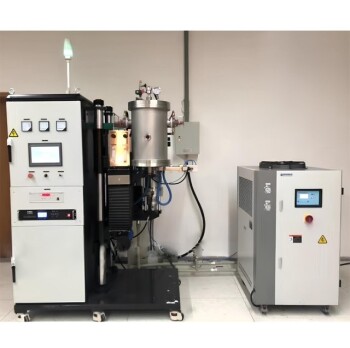
Vacuum Heat Treat Sintering Furnace Molybdenum Wire Vacuum Sintering Furnace
KINTEK's Vacuum Molybdenum Wire Sintering Furnace excels in high-temperature, high-vacuum processes for sintering, annealing, and material research. Achieve precise 1700°C heating with uniform results. Custom solutions available.

Small Vacuum Heat Treat and Tungsten Wire Sintering Furnace
Compact vacuum tungsten wire sintering furnace for labs. Precise, mobile design with superior vacuum integrity. Ideal for advanced material research. Contact us!

9MPa Air Pressure Vacuum Heat Treat and Sintering Furnace
Achieve superior ceramic densification with KINTEK's advanced air pressure sintering furnace. High-pressure up to 9MPa, precise 2200℃ control.

Vacuum Heat Treat Sintering and Brazing Furnace
KINTEK Vacuum Brazing Furnaces deliver precision, clean joints with superior temperature control. Customizable for diverse metals, ideal for aerospace, medical, and thermal applications. Get a quote!

Vacuum Heat Treat Furnace with Ceramic Fiber Liner
KINTEK's Vacuum Furnace with Ceramic Fiber Lining offers precise high-temperature processing up to 1700°C, ensuring uniform heat distribution and energy efficiency. Ideal for labs and production.

Molybdenum Vacuum Heat Treat Furnace
High-performance molybdenum vacuum furnace for precise 1400°C heat treatment. Ideal for sintering, brazing, and crystal growth. Durable, efficient, and customizable.

Vacuum Heat Treat Sintering Furnace with Pressure for Vacuum Sintering
KINTEK's Vacuum Pressure Sintering Furnace offers 2100℃ precision for ceramics, metals, and composites. Customizable, high-performance, and contamination-free. Get a quote now!

Vacuum Hot Press Furnace Machine Heated Vacuum Press Tube Furnace
Discover KINTEK's advanced Vacuum Tube Hot Press Furnace for precise high-temperature sintering, hot pressing, and material bonding. Customizable solutions for labs.

2200 ℃ Graphite Vacuum Heat Treat Furnace
2200℃ Graphite Vacuum Furnace for high-temperature sintering. Precise PID control, 6*10⁻³Pa vacuum, durable graphite heating. Ideal for research & production.

2200 ℃ Tungsten Vacuum Heat Treat and Sintering Furnace
2200°C Tungsten Vacuum Furnace for high-temperature materials processing. Precise control, superior vacuum, customizable solutions. Ideal for research & industrial applications.

Custom Made Versatile CVD Tube Furnace Chemical Vapor Deposition CVD Equipment Machine
KINTEK's CVD Tube Furnace offers precision temperature control up to 1600°C, ideal for thin film deposition. Customizable for research and industrial needs.
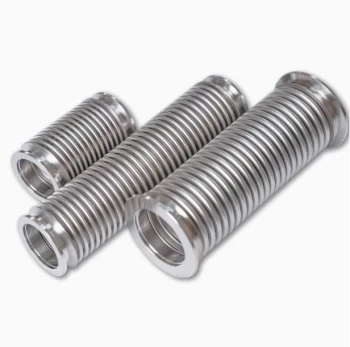
High Performance Vacuum Bellows for Efficient Connection and Stable Vacuum in Systems
KF ultra-high vacuum observation window with high borosilicate glass for clear viewing in demanding 10^-9 Torr environments. Durable 304 stainless steel flange.

Spark Plasma Sintering SPS Furnace
Discover KINTEK's advanced Spark Plasma Sintering (SPS) Furnace for rapid, precise material processing. Customizable solutions for research and production.
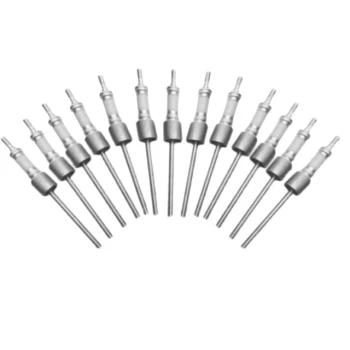
Ultra Vacuum Electrode Feedthrough Connector Flange Power Lead for High Precision Applications
Ultra-Vacuum Electrode Feedthroughs for reliable UHV connections. High-sealing, customizable flange options, ideal for semiconductor & space applications.
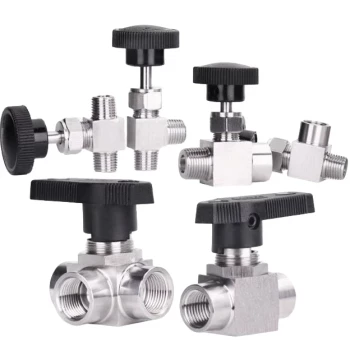
304 316 Stainless Steel High Vacuum Ball Stop Valve for Vacuum Systems
KINTEK's 304/316 stainless steel vacuum ball valves and stop valves ensure high-performance sealing for industrial and scientific applications. Explore durable, corrosion-resistant solutions.

CF KF Flange Vacuum Electrode Feedthrough Lead Sealing Assembly for Vacuum Systems
Reliable CF/KF flange vacuum electrode feedthrough for high-performance vacuum systems. Ensures superior sealing, conductivity & durability. Customizable options available.

Vacuum Hot Press Furnace Machine Heated Vacuum Press
KINTEK Vacuum Hot Pressing Furnace: Precision heating & pressing for superior material density. Customizable up to 2800°C, ideal for metals, ceramics, and composites. Explore advanced features now!
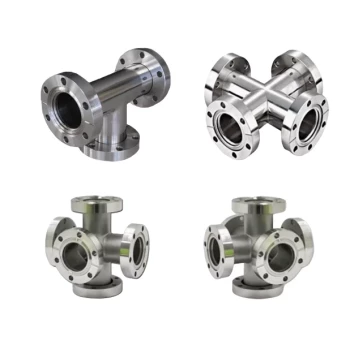
Ultra High Vacuum Stainless Steel KF ISO CF Flange Pipe Straight Pipe Tee Cross Fitting
KF/ISO/CF ultra-high vacuum stainless steel flange pipe systems for precision applications. Customizable, durable, and leak-tight. Get expert solutions now!

RF PECVD System Radio Frequency Plasma Enhanced Chemical Vapor Deposition
KINTEK RF PECVD System: Precision thin-film deposition for semiconductors, optics & MEMS. Automated, low-temperature process with superior film quality. Custom solutions available.
Related Articles

How to Select the Right Vacuum Hot Pressing Furnace Temperature for Your Materials
Learn how to choose the right vacuum hot pressing furnace temperature for materials like ceramics, metals, and alloys. Optimize sintering with expert tips.

Beyond the Parts List: The Real Reason Your Vacuum Hot Press Fails (And How to Fix It)
Frustrated with inconsistent vacuum hot press results? Discover why just upgrading parts fails and how a system-based approach unlocks repeatable success.

How Vacuum Hot Press Furnaces Transform Advanced Material Engineering
Vacuum hot press furnaces enable precise material synthesis for aerospace, electronics, and energy sectors, enhancing density, strength, and reliability.

Why Your Sintered Parts Fail: It’s Not Just About Heat, But Pressure and Purity
Struggling with porous, weak, or contaminated sintered materials? Discover why simply raising the temperature isn't the answer and how the interplay of heat, pressure, and vacuum is the key.

How Vacuum Pressure Sintering Furnaces Elevate Material Performance Across Industries
Discover how vacuum pressure sintering furnaces enhance material performance with precision, purity, and industry-specific benefits across aerospace, medical, and automotive sectors.

Why Your High-Temperature Materials Fail: The Hidden War Inside Your Furnace
Discover why your hot-press experiments yield inconsistent results. It's not your settings—it's a hidden chemical reaction contaminating your samples.

Why Your High-Purity Metals Oxidize in a Perfect Vacuum—And How to Stop It
Frustrated by oxidized metals from your vacuum furnace? Discover the real culprit isn't the vacuum but the cooling phase, and how to fix it.

Why Your Vacuum Furnace Failed After the Lab Move—And How to Prevent It
Discover why vacuum furnaces often fail after being moved and how robust engineering prevents costly damage to seals and components. Protect your investment.

Your Vacuum Furnace Is a System, Not a Component—Here’s Why That Changes Everything
Struggling with inconsistent high-temperature vacuum processes? Discover why a bigger pump isn't the answer and how an integrated system approach is key.

Your Furnace Reached Temperature. So Why Did Your Experiment Fail?
Discover the hidden reason your high-temperature vacuum experiments fail despite hitting specs. Learn how heating element choice impacts purity and success.

The Real Reason Your High-Performance Materials Are Failing (And It’s Not the Alloy)
Tired of inconsistent heat treatment? Discover the two invisible culprits sabotaging your materials and how a vacuum furnace provides the control to fix it for good.

Why Your High-Temperature Experiments Are Failing—And It's Not What You Think
Frustrated with inconsistent results from your furnace? Discover why max temperature isn't the problem and how to achieve perfect thermal uniformity.